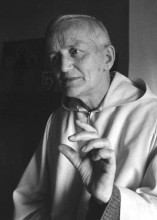A desire for God Pilgrimage to Taiz
The enormous ecumenical impact of the Taizé community, with its haunting music and its tradition of silent prayer and meditative chant, is astonishing given that the community never promoted itself. No doubt many American Christians who have made the pilgrimage to Taizé had to suppress their initial disappointment at its unprepossessing buildings and casual presentation. If the brothers of Taizé had just a touch of the American entrepreneurial spirit, surely they would have added a welcome center with a gift shop, some illustrated pamphlets, and a café with views of the Burgundy hills.


